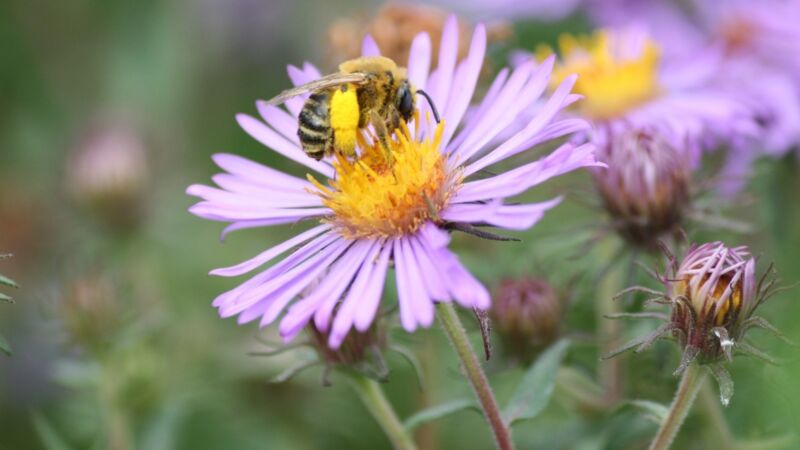
Why monarchs? While monarchs are intrinsically important, conserving monarchs matters for more than just their own protection. We’re exploring the ways that monarch habitat and conservation helps people, other wildlife and the environment in this ‘More than Monarchs’ series! Join us to learn more.
“Wildlife diversity” means that a lot of different kinds of plants and animals can be found in one place. When large plant ecosystems are broken apart from each other or damaged, wildlife diversity decreases. If animals are not in contact with other plants and animals, they have less food and shelter. If animals can’t find mates of the same species, they can’t reproduce.
Monarchs are a good example of this. When monarch females can’t find milkweed, they have nowhere to lay their eggs. When there are no flower patches or the flowers are too far apart, they can’t get food to fuel their flight. And, if they are not all gathering together around the same flowers, they can’t find each other. Monarchs are a food source for other important wildlife, so you can see that if you have fewer monarchs, it affects other animals, too.

The Monarch Waystation #1 at Monarch Watch provides nectar and pollen sources for countless insects. There are so many insects that their buzzing and mating calls nearly drown out the sounds of the campus buildings and traffic. The garden is a hidden oasis surrounded in all directions by buildings, mowed lawns, pavement and sidewalks. We are often visited by mockingbirds, bluebirds, finches, wrens, frogs, rabbits, squirrels and deer. The Waystation provides host plants for a wide variety of caterpillars that in turn feed other wildlife. We have even seen predators like garden spiders, foxes, coyotes and hawks in our garden.
Increasing plant diversity of our green spaces will help reconnect fragmented wildlife communities. Restoring plant ecosystems is just one example of how the work we do for monarchs can make a difference in many ways. What are the co-benefits of monarch conservation that matter most to you? Keep following our More than Monarchs series to hear more stories of what monarchs can do for us, our communities and our world.
Article contributed by Angie Babbit, Monarch Watch, for the Monarch Joint Venture Communications Working Group and NAPPC Monarch Taskforce. The Monarch Joint Venture is a national partnership of federal and state agencies, non-governmental organizations, businesses and academic programs working together to conserve the monarch butterfly migration. The content in this article does not necessarily reflect the positions of all Monarch Joint Venture partners. Photos by Candy Sarikonda.
